


There are many ancient ruins, many beautiful mountain hikes, many places that combine history and mystery in an intriguing blend—but none like Machu Picchu. Perched high in the Peruvian Andes, Machu Picchu is one attraction that lives up to, and beyond, its hype.
This Machu Picchu guide gives you a complete rundown on how to travel to Machu Picchu, how to plan your trip to see the Machu Picchu highlights, and other useful tips to make the most out of your adventure. Read on for the ultimate guide to the Lost City of Inca.
Where is Machu Picchu?
Machu Picchu is situated in south central Peru, a South American country with 5 bordering neighbors: Ecuador, Colombia, Brazil, Bolivia, and Chile.
Section Type: standardWidthImageS
Machu Picchu in Peru Map
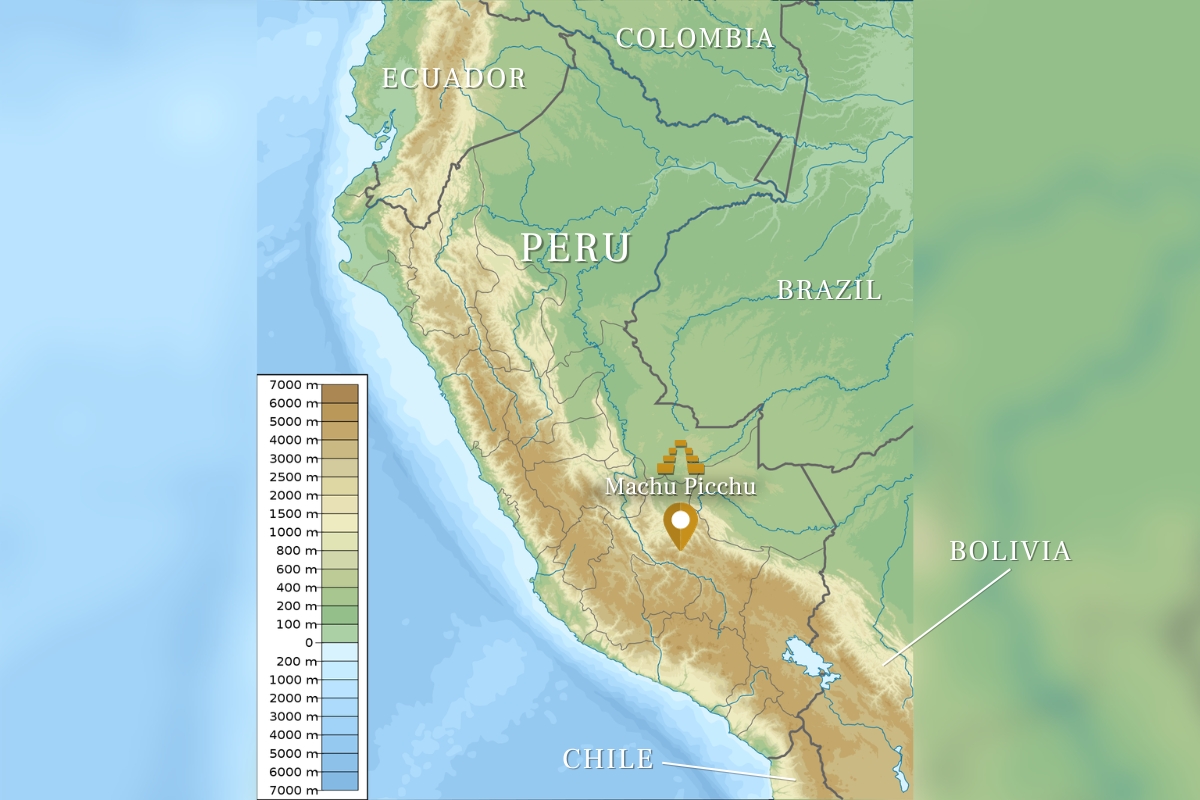
Most historians believe Machu Picchu’s mountainside construction began in the 1400s under the watchful eye of Inca ruler Pachacutec. The prevailing theory is that Machu Picchu was a royal retreat, a place where the Inca elite could relax and enjoy their lavish surroundings.
For this reason, Machu Picchu was placed far from other Inca cities and sites. It was so well isolated that the Spaniards—who conquered the Inca Empire and its Cusco capital in the 1530s—never knew Machu Picchu existed.
Machu Picchu Mountains and Altitude
Machu Picchu sits within the Cordillera de Vilcabamba, a small Andean range that runs for 160 miles and reaches 20,575 feet above sea level at its highest point. Machu Picchu, however, only hits 7,970 feet above sea level, a lower altitude than the city of Cusco.
The ruins are located between two main peaks: Machu Picchu and Huayna Picchu (also spelled Wayna Picchu).
This area of concentrated ruins covers only about 20 of the 80,310-acre Machu Picchu Historic Sanctuary, a UNESCO World Heritage site since 1983. Overlooking the Urubamba River, the Sanctuary’s ecosystem is influenced both by the Andes and the Amazon, creating a lush tropical mountain forest environment.
Due to Machu Picchu’s high elevation, altitude sickness can be a concern for visitors. To alleviate common symptoms such as fatigue and headache, SA Expeditions allows every traveler at least one day of acclimation upon arrival to Cusco. When acclimating to altitude, it’s important to stay well-hydrated, have enough rest, and avoid alcohol and strenuous activity.
Section Type: standardWidthImageS
Being in the mountains, you’ll be walking a lot of ups and downs. Always have water and take it easy!
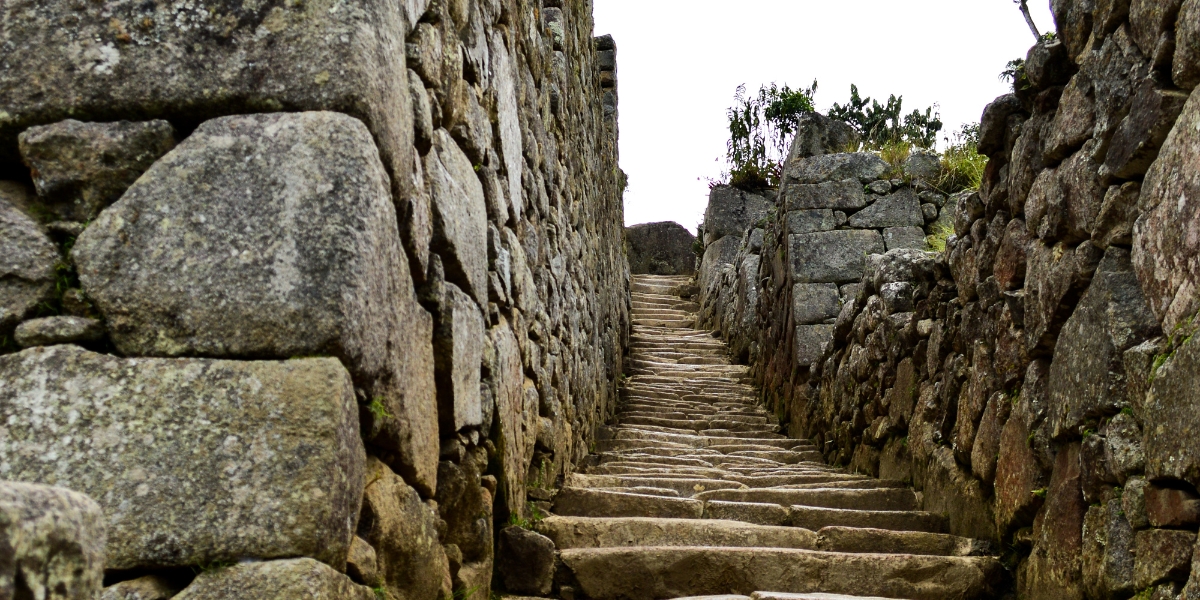
How to Get to Machu Picchu?
A typical Peru vacation begins in Lima, the location of the country’s main international airport. Lima is also the capital and largest city in Peru.
From here you will likely fly to Cusco, the city closest to Machu Picchu. Time in the air is about one hour.
From Cusco, Machu Picchu is about 70 miles northwest by road, on the other side of the Sacred Valley.
Below Machu Picchu on the other side of the mountain is the tiny town of Aguas Calientes, also called Machu Picchu Pueblo or Machu Picchu Town. Most people who visit the citadel will spend at least one night in Aguas Calientes. Other than the Inca Trail, this town is the only access point to the ruins.
Trains to Machu Picchu
Trains to Machu Picchu leave from three different stations in the Cusco Region: Ollantaytambo, Urubamba, and Poroy. SA Expeditions typically has travelers depart from the Ollantaytambo and Urubamba stations to reach Aguas Calientes, the gateway to Machu Picchu since its the most scenic and efficient route.
The train from Ollantaytambo takes about 1.5 hours and is operated by PeruRail and Inca Rail.
The train from Urubamba takes about 2.5 hours and is operated by PeruRail.
The train from Poroy takes about 3 hours and 15 minutes and is operated by PeruRail.
Section Type: standardWidthImageS
PeruRail’s Vistadome Train (Photo: PeruRail)
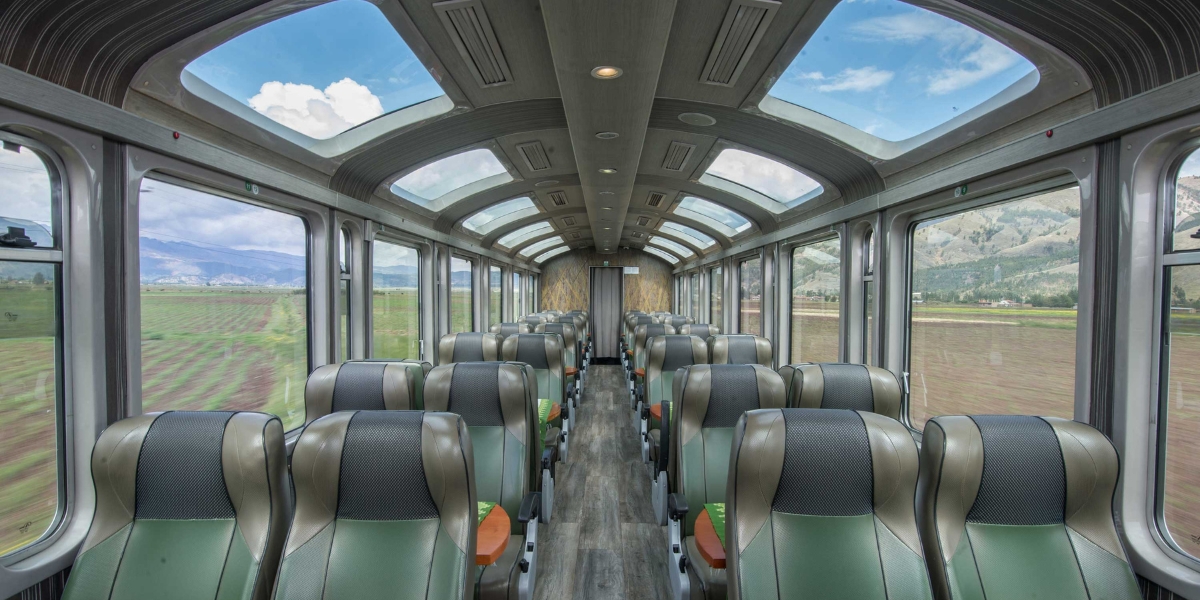
PeruRail and Inca Rail have several types of trains that offer comfortable seating and various amenities. Depending on your choice of train, you can enjoy food and beverage services, panoramic windows that allow fantastic views, and exclusive bar and gourmet meal services as you make your way to the iconic Wonder of the World.
From Aguas Calientes to Machu Picchu
Aguas Calientes sits at 6,690 feet above sea level, while Machu Picchu is at 7,970 feet above sea level. Accessed via the Hiram Bingham Road, there are two different ways to travel up to Machu Picchu from Aguas Calientes:
Bus: We recommend taking the 30-minute bus ride to Machu Picchu as this is the quickest and most physically friendly way to get to the ruins. You will have more time to explore Machu Picchu, as well as do additional hikes around the site. Buses to Machu Picchu leave from 5:30AM to 3:30PM every 5-10 minutes.
By foot: The walk from Aguas Calientes to Machu Picchu takes about two hours and boasts stunning landscapes, such as the mountain range and thick vegetation that surrounds Machu Picchu. With a gain of over 1,200 feet, trekking up to Machu Picchu can be physically demanding.
If time permits, a bonus option can be to take the bus ride up to Machu Picchu and return by walking back down to Aguas Calientes, descending the mountain. Whichever you prefer, SA Expeditions will help you organize all necessary transportation to get to Machu Picchu.
Hike the Inca Trail to Machu Picchu
Section Type: standardWidthImageS
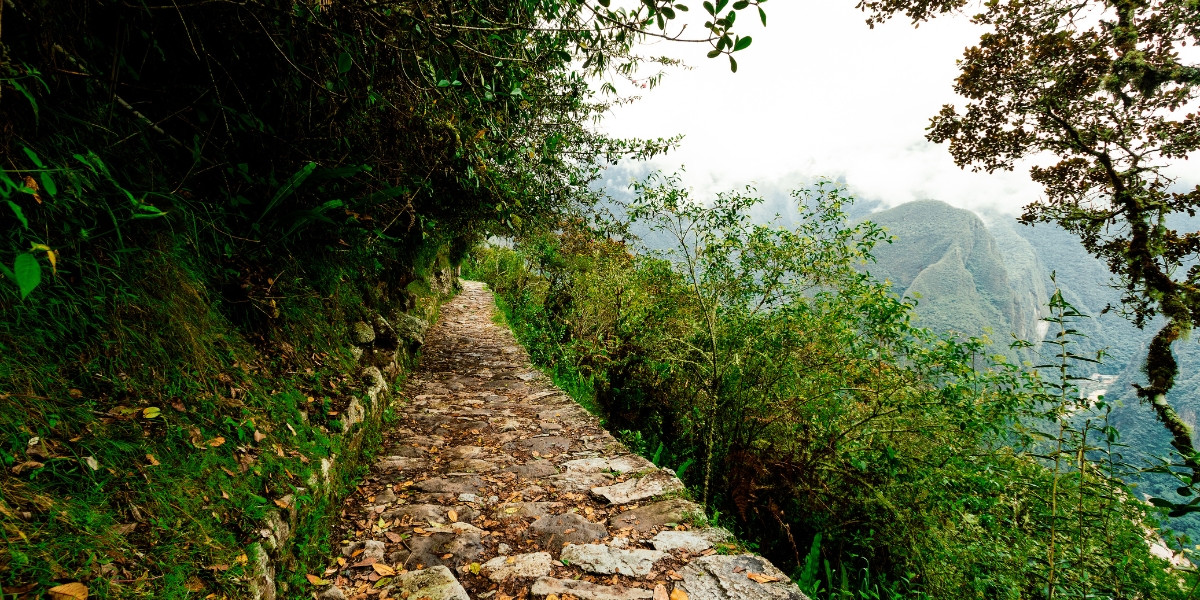
Hiking the Inca Trail to Machu Picchu is one of the best ways to truly immerse yourself into the world of the Inca. The best options include hiking the Classic Inca Trail, the Short Inca Trail, or the Salkantay Trek.
The Classic Inca Trail: Starting with a train ride from Cusco to the trailhead, this famous route takes you on a 26-mile trek from KM82 to Machu Picchu. For four days, you will be hiking through various Inca sites, including Llactapata, Sayacmarca, Phuyupatamarca, Wiñay Wayna, and the infamous Dead Woman’s Pass, before beholding the magical Machu Picchu.
The Short Inca Trail: The Short Inca Trail is a day hike that is essentially the final 9 miles of the Classic Inca Trail. This is a great option for those who aren’t interested in camping but would still like to experience the Inca Trail. From Cusco, you will take a train ride to KM104 to begin your hike to Machu Picchu. Passing through Chachabamba, you will get the chance to see the awe-inspiring archaeological site of Wiñay Wayna and approach Machu Picchu through the glorious Sun Gate.
The Salkantay Trek: Starting with a car ride from Cusco to the trailhead, the Salkantay Trek takes you on a 41-mile hike from Soraypampa to Aguas Calientes. For four days, you will be hiking among majestic mountains, beautiful cloud forests, and fascinating sites like Llactapata until you arrive to your hotel at Aguas Calientes. The following day, you will take the bus to the magnificent ruins of Machu Picchu.
Other Treks around Machu Picchu
The treks mentioned above aren’t the only spectacular trails near Machu Picchu! If you're seeking a less crowded yet equally breathtaking path, there are several other options, such as the trek to the vast, mythical ruins of Choquequirao or Vitcos, both located in the remote and little-visited Vilcabamba Range. The three-day Lares Trek takes you among stunning mountain and lake views, lovely Andean villages, and the fascinating Inca site of Pumamarka.
Section Type: standardWidthImageS
The magic of the Choquechaca Valley
For a truly special experience (and a past traveler favorite), the two-night Choquechaca Trek is a unique and authentic experience developed by SA Expeditions in conjunction with the people of the Choquechaca Valley, who have become integral partners in our company's journey. You’ll trek through remote and pristine landscapes accompanied by the people who have lived there for centuries, camp in spectacular locations, and visit your guides’ ancestral village and meet their families.
For those who aren’t keen on camping every night but still want to explore the Inca Trail, our Great Inca Trail Day Hikes would be perfect for you! This tour takes travelers off the beaten path to some of the most pristine sections of the Qhapaq Ñan, or Great Inca Trail, including the Choquechaca Valley. At the end of each day, you’ll be able to unwind at a cozy hotel.
How to Plan your Trip to Machu Picchu
Machu Picchu Tickets
In Machu Picchu, there are five different types of entry tickets: Machu Picchu only, Machu Picchu and Huayna Picchu, Machu Picchu and Huchuy Picchu, Machu Picchu Mountain and the ruins, and Machu Picchu and the Inca Bridge.
Considering each experience takes different lengths of time, each ticket has distinct entry hours as well as designated routes throughout the Inca ruins. The traveler must enter the ruins in the hour they have purchased. For example, a 6:00AM entrance must enter the site between 6:00-6:59AM.
Section Type: standardWidthImageS
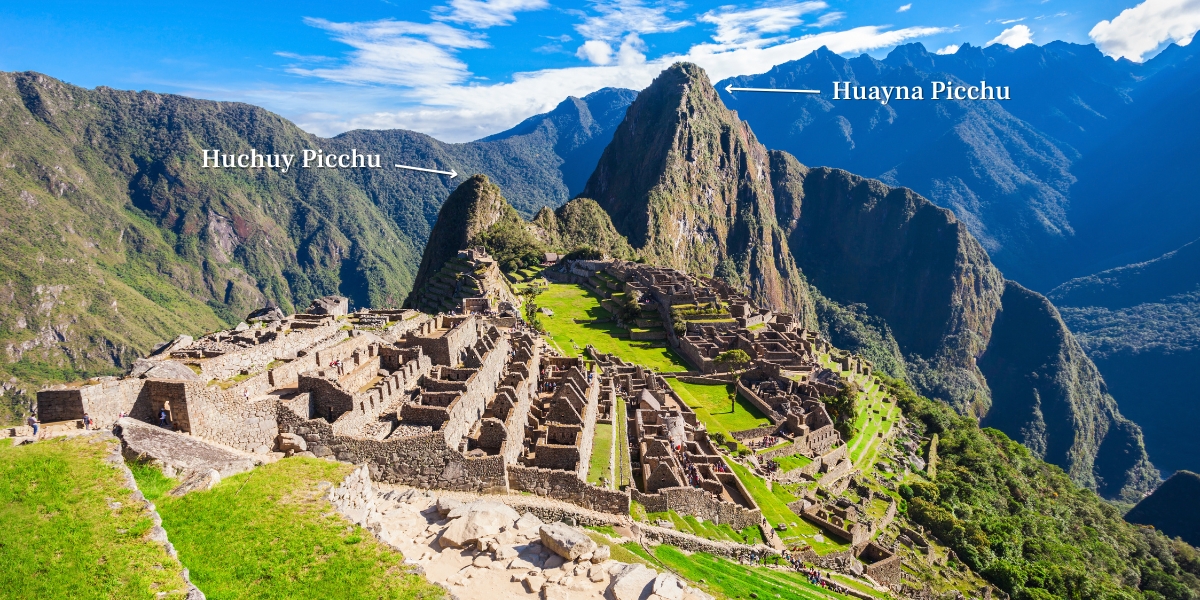
Those with Machu Picchu Only tickets can go through any of the four circuits within the archaeological site. However, we recommend taking Circuit 1 or Circuit 2 as they provide the most comprehensive tours throughout the ruins. These routes take about three hours to complete.
Travelers with tickets to Machu Picchu and Huchuy Picchu go through Circuit 4. The route to Huchuy Picchu takes about three hours to complete.
Visitors with tickets to Machu Picchu and Huayna Picchu also hike through Circuit 4. The route to Huayna Picchu takes about four hours to complete.
Those adding a visit to Machu Picchu Mountain will take Circuit 3, then hike up the Machu Picchu Mountain Route, taking about five hours to complete. (Not sure whether to hike Machu Picchu Mountain or Huayna Picchu? Check out this blog!)
Visitors with tickets to Machu Picchu and the Inca Bridge walk through Circuit 1 or Circuit 2, taking up to three hours to complete, along with a 20-minute hike to the Inca Bridge.
Section Type: standardWidthImageS
View of the ruins from Machu Picchu Mountain
Booking your ticket in advance is essential! We recommend booking at least three months in advance, noting that Huayna Picchu and Machu Picchu Mountain tickets are higher in demand than general Machu Picchu admission. Booking with SA Expeditions will ensure you secure all tickets and transportation necessary for your unforgettable journey.
Plan the Visit to Machu Picchu
Most Machu Picchu tours include 2 hours with a specialist guide who details the most important and interesting structures. With SA Expeditions, you will have the same local expert guide all throughout your journey in Cusco, the Sacred Valley, and Machu Picchu to ensure your trip runs as smoothly as possible.
As the site contains over 200 buildings (or partial buildings), there is plenty to explore, and an early morning visit is highly recommended. As the sun breaks through the mist, Machu Picchu is tantalizingly revealed bit by bit until the whole complex is enveloped in an amber glow. To fully appreciate the splendor of a Machu Picchu sunrise, head directly to the Sun Gate or toward Huayna Picchu, both of which offer panoramic views of the entire complex.
Perhaps Bingham, the first Westerner to experience these mystical ruins, describes the beautiful mix of expert architecture and stunning scenery better than any other:
“The Incas were, undeniably, lovers of beautiful scenery. Many of the ruins of their most important places are located on hill tops, ridges, and mountain shoulders, from which particularly beautiful views can be obtained. Remarkable as is the architecture of Machu Picchu, and impressive as is the extent of the stone-cutting done by a people who had no steel or iron tools, neither of these things leaves more impression on the mind of the visitor than the inexpressible beauty and grandeur of the surroundings.”
Machu Picchu Highlights
Section Type: standardWidthImageS
Walls of Intipunku, Sun Gate

Having a general entrance to Machu Picchu and hiking Circuit 2 takes you through the best parts of the ruins, including sites such as:
1. Temple of the Sun
2. Temple of the Condor
3. Hall of Mirrors
4. Three Covers
5. Sacred Rock
6. Intihuatana
7. Sacred Plaza
8. The Guardhouse
Other highlights include the supplemental admissions to the Inca Bridge, Huayna Picchu, Huchuy Picchu, and Machu Picchu Mountain. Hiking up Huayna Picchu also brings you to the Temple of the Moon.
If you are hiking the Inca Trail to Machu Picchu, Intipunku (also known as the Sun Gate) is the iconic gateway where you catch your first glimpse of the Inca citadel. While you can still hike out and back to Intipunku from the ruins with a general admission, note that the Sun Gate is over 1,000 ft. higher than ruins, meaning this would add an extra few hours to your visit. We recommend touring the site before deciding to hike to Intipunku.
Best Time to Visit
Machu Picchu is open year-round and the best time to visit ultimately depends on personal preference.
The dry season is from May to September, while the wet season is from October to April. Each period has their own pros and cons. The dry season is the most popular and busiest time of the year with little to no rainfall, and even holds the fascinating Inti Raymi festival. Although the rainy season can be more challenging, there is less crowding on site and the rainfall brings lush vegetation and blooming flowers. To have the best of both worlds, consider visiting during the shoulder seasons in May or September. Take a look at a more detailed guide of when to visit Machu Picchu here.
Where to Stay
Aguas Calientes offers a variety of options available for lodging. For those who enjoy boutique hotels, Casa Andina is set alongside the Vilcanota River and provides an excellent setting for relaxing before and after a full day of exploration at Machu Picchu, along with an elaborate breakfast buffet and a fully stocked snack store for meals-on-the-go.
For travelers seeking a more superior or luxurious option, Sumaq is an excellent lodge also set by the Vilcanota River, offering cozy and charming, upscale bedrooms and an elegant restaurant serving tasty Peruvian fusion cuisine.
Section Type: standardWidthImageS
Bedroom in Sumaq Hotel
Other options include El Mapi and Pueblo Hotel. El Mapi boasts a great location near the town square and hot springs, plus an impressive hotel bar and café, while Pueblo Hotel holds quaint, luxurious cottages and sumptuous amenities like a natural Andean sauna, a naturalist center, and an exquisite restaurant.
Packing Tips
When visiting Machu Picchu, keep a few things in mind: the weather in the Andes can be unpredictable, the terrain can be quite rugged (especially on the Inca trail), and you may be on your feet for an extended period of time. Our main advice for what to bring to Machu Picchu would be:
Lightweight, quick dry clothing
Layers to be able to put on and take off necessary clothing
Comfortable, sturdy shoes
Rain jacket or poncho
Sun protection (sunscreen, hat, lip balm, etc.)
Lots of water!
Considering there are limitations when bringing baggage on the train to Machu Picchu, you will need to make sure you have a separate duffel, backpack, or small suitcase apart from your main luggage (full checked-size suitcases are not permitted on the train). During your stay at Machu Picchu, your main luggage will be stored securely at your Cusco or Sacred Valley hotel at no additional charge.
If you're traveling with SA Expeditions on a Machu Picchu Trek, you're in luck! Several essential items, such as a tent, sleeping system, meals, and even bathroom, are already included in your trip. For more information, read our ultimate guide on packing for the Inca trail to Machu Picchu.
Machu Picchu History: When and how were the ruins discovered?
Built by the Incas around 1450 and later abandoned, Machu Picchu sat in relative obscurity until 100 years ago when Hiram Bingham, an American explorer and professor, stumbled upon the ruins in July of 1911. Bingham, guided by in-the-known locals, mapped, and documented the jungle-covered stone ruins to the best of his ability before returning to the United States where he published his finding in National Geographic.
Section Type: standardWidthImageS
Hiram Bingham in Machu Picchu, 1912.

In his own words, Machu Picchu:
“…not only is larger and contains more edifices than any other ruin discovered in Peru (except Cusco); it has the additional advantage of not having been known to the Spaniards, of not having been occupied by their descendants, and of not having been torn to pieces by treasure hunters seeking within the walls for the gold and silver ornaments that were not to be found in the floors.
In other words, Machu Picchu is not only more extensive than any previously discovered Inca city outside of Cusco, but it is in a remarkably good state of preservation, and its architecture has not become confused with Spanish efforts to build churches and villas.” (Bingham, Hiram. “In The Wonderland of Peru.” National Geographic April 1913.)
Although Bingham and numerous scholars since have studied Machu Picchu extensively, the true purpose for its construction remains largely a mystery. Recent theories identify Machu Picchu as a retreat for royalty, and when you first set sight upon these ruins surrounded by lush mountain peaks with a rising mist that frosts the outlying buildings, it is easy to visualize this as a lavish compound of luxury.
Things you probably didn’t know about Machu Picchu, Peru
Section Type: standardWidthImageS
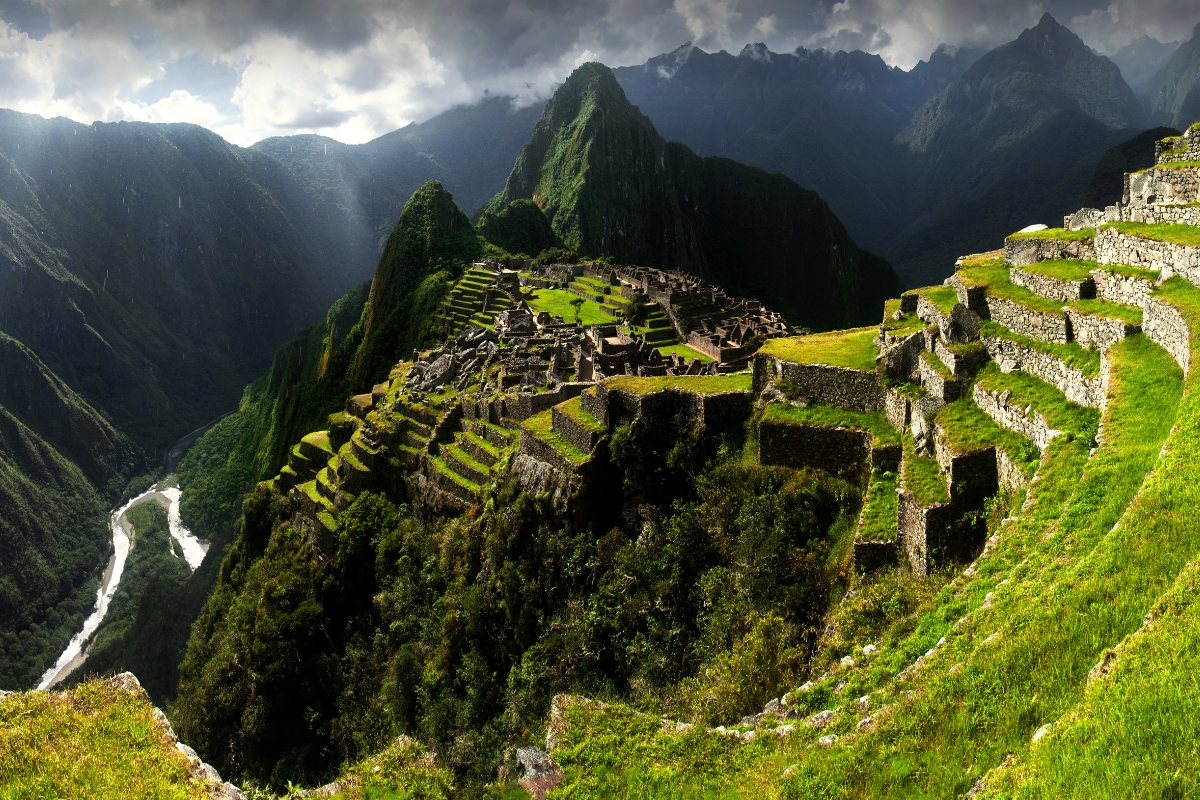
1. Machu Picchu means ‘old peak’ or ‘old mountain’ in the local Quechua tongue. Machu has one 'c' and Picchu has two. Get it right!
2. Almost all known Inca settlements, cities and sites were at least partially destroyed by the Spanish conquistadors: one need only visit Cusco to see what they were capable of. Machu Picchu’s location saved it: because it isn't visible from below, the Spanish never found it.
3. Although Hiram Bingham is credited as the first westerner to discover the ruins (in 1911), it’s highly likely that others had been before him – perhaps as many as 40 years earlier. Bingham was definitely the first academic to discover them, and his book Lost City of the Incas caused quite a storm in the US and Europe. Ironically, Machu Picchu probably isn’t the lost city Bingham was looking for: he was intent on finding Vilcabamba, which is believed to be about 50 miles west of Machu Picchu.
4. The Incas are probably the greatest stone-masons ever to have walked the earth. For all its magnificence, the construction of Machu Picchu did not require a single ounce of mortar: instead the Incas cut their stone blocks so precisely that they were able to wedge them together so tightly that the blade of a knife cannot fit between them. Not only is this an amazing feat of engineering but it’s also very useful in an area prone to earthquakes: during a quake or tremor the stones ‘dance’ but the walls do not crack or fall. Cusco’s quakes of 1650 and 1950 were clear proof of the superiority of Inca construction over Spanish – Spanish churches crumbled but their Inca foundations stood firm.
5. Not only was Inca stone-masonry exceptional, but their laborers are thought to have carried the 50 pound stones to the site by hand. Incas did not have wheeled vehicles, and they did not use animals to lug or carry heavy items. Throughout Machu Picchu there are more than 100 staircases. Almost all of which are carved from a single piece of stone – I wonder how they got there?
6. If you hike the Inca Trail you’ll probably notice that the porters sleep on top of a small piece of mirror or reflective metal, face down on the earth. They do this to protect themselves from being whisked away by evil spirits which live within the earth
7. Although the Inca trail is a challenge for most people when completed gradually over 4-5 days, there is now an annual Inca trail marathon where runners compete the course in under 12 hours. The record stands at just under four hours.
8. Like all tourist attractions, Machu Picchu has rules of entry. Most of them are pretty standard, but one is very quirky indeed as it forbids you to enter the ruins in the traditional dress of another country. Best you leave the kilt at home then …
9. One of the peculiarities of Machu Picchu is that there is hardly any information about the ruins on site. There is, however, a very good ‘museo del sitio’ between Aguas Calientes and the citadel.
Section Type: cta
Whew! We’ve covered a ton of details to help you prepare for your adventure to Machu Picchu. It’s time to have a look at what your Machu Picchu journey can look like. When you’re ready, talk to a Destination Expert and we’ll have your trip in action in no time!


Copyright © 2026 SA Luxury Expeditions LLC, All rights reserved | 95 Third Street, 2nd floor, San Francisco, CA, 94103 | 415-549-8049
California Registered Seller of Travel - CST 2115890-50. Registration as a seller of travel does not constitute approval by the state of California.










